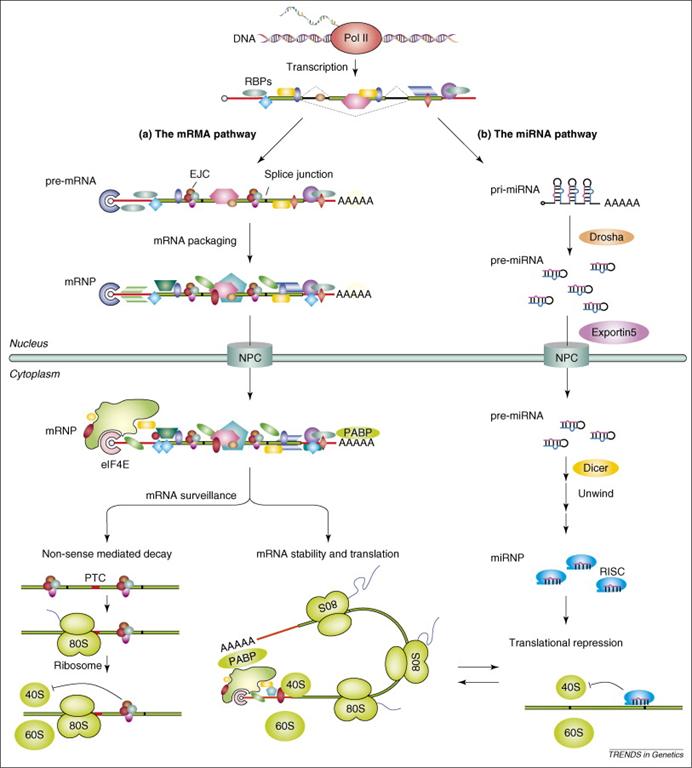
Ribonucleic acids (RNAs) are derived from the DNA and program the cells to make proteins. There are many types of RNAs in the cells such as transfer RNAs (tRNAs), ribosomal RNAs (rRNAs), and messenger RNAs (mRNAs). They all have their respective functions to carry on within the cells.
RNAs in cells are associated with RNA-binding proteins (RBPs) to form ribonucleoprotein (RNP) complexes. RBPs function in multiple cellular processes. For example, RBPs are involved in DNA replication, expression of histone genes, regulation of transcription, and translational control. Many RBPs have been identified as essential factors during the development of somatic tissues, including neurons and muscles. Genetic information stored in chromosomal DNA is translated into proteins through mRNAs. This allows for post-transcriptional control of gene expression conferring a crucial role to the mRNA-binding proteins in this regulation. Post-transcriptional control can occur at many different steps in RNA metabolism, including splicing, polyadenylation, mRNA stability, mRNA localization and translation.
RBPs contain one or, more often, multiple RNA-binding domains. Some well-characterized RBPs such as Sam68 contain a heterogeneous nuclear ribonucleoprotein K-homology (KH) domain in a larger RNA binding domain. Sam68 is a member of a family of proteins referred to as the STAR (signal transduction and activators of RNA metabolism) proteins.
RBPs are associated with a large number of human diseases including neurodegeneration and cancers. Proper functioning of these networks is essential for the coordination of post-transcriptional events, and their perturbation can lead to diseases.
Projects
The laboratory is currently studying projects that implicate Sam68 in cancer metabolism and the role of the QKI RNA binding proteins in oligodendrocyte differentiation and CNS myelination.